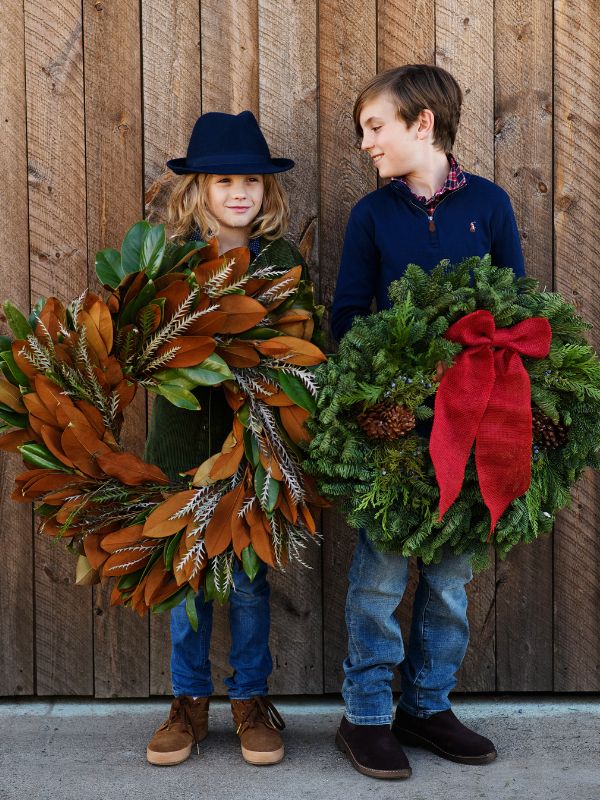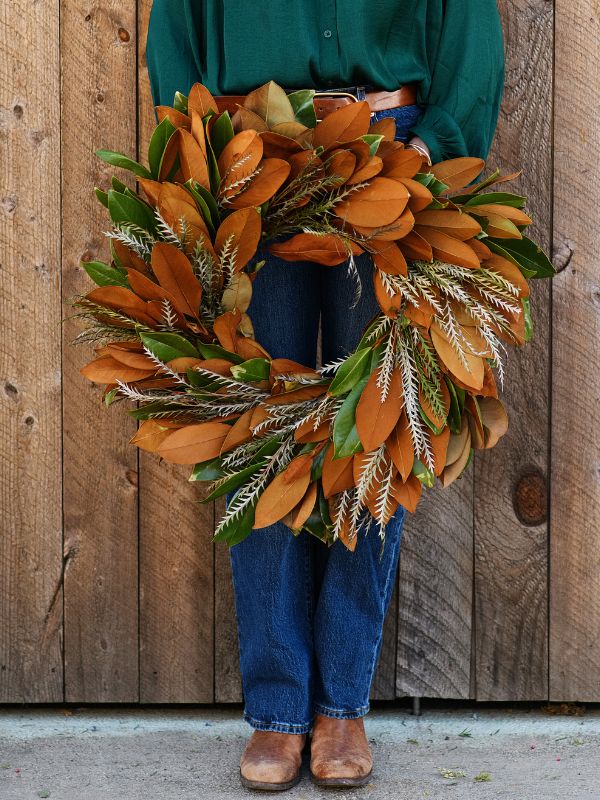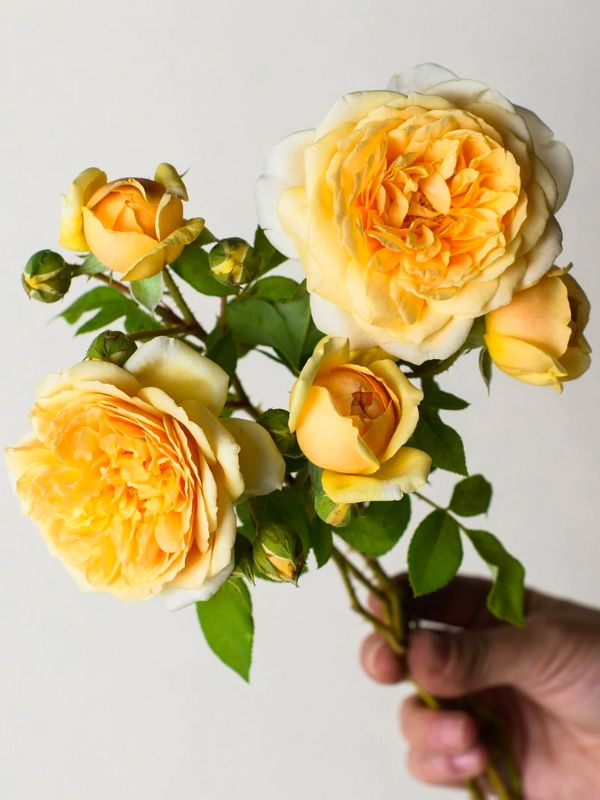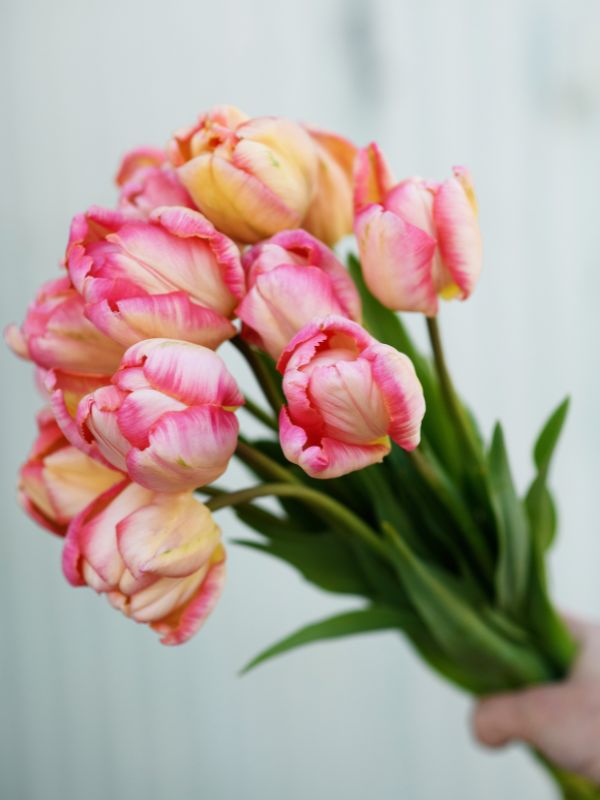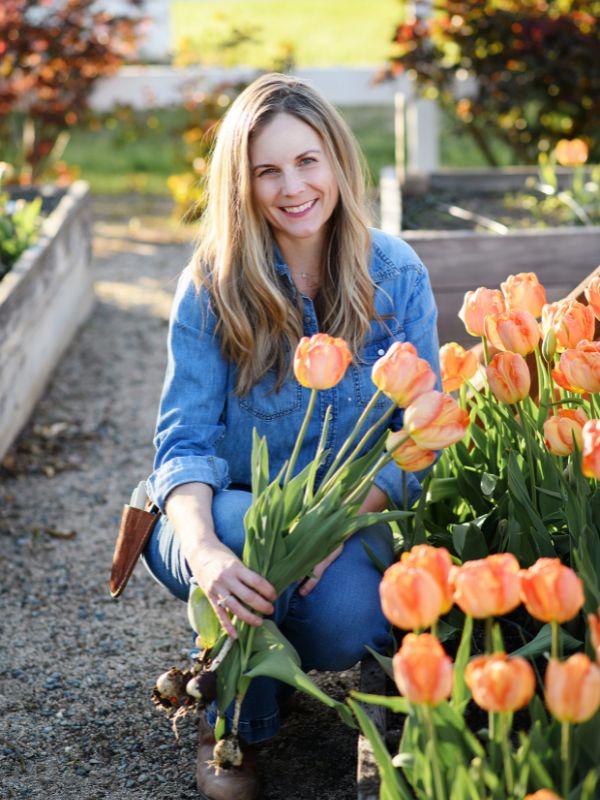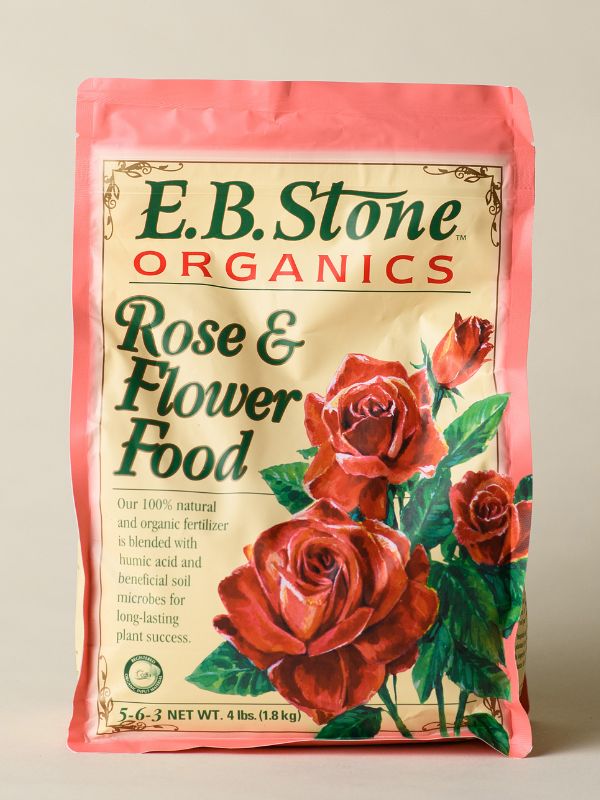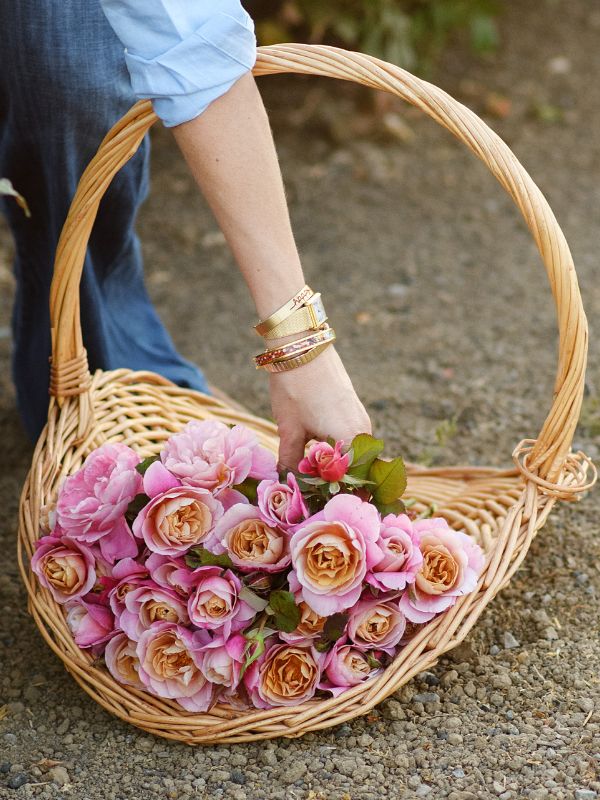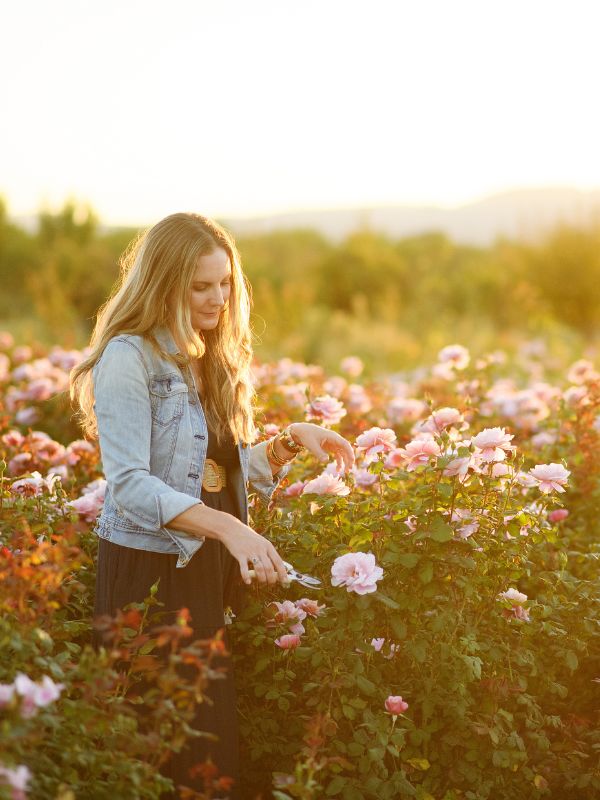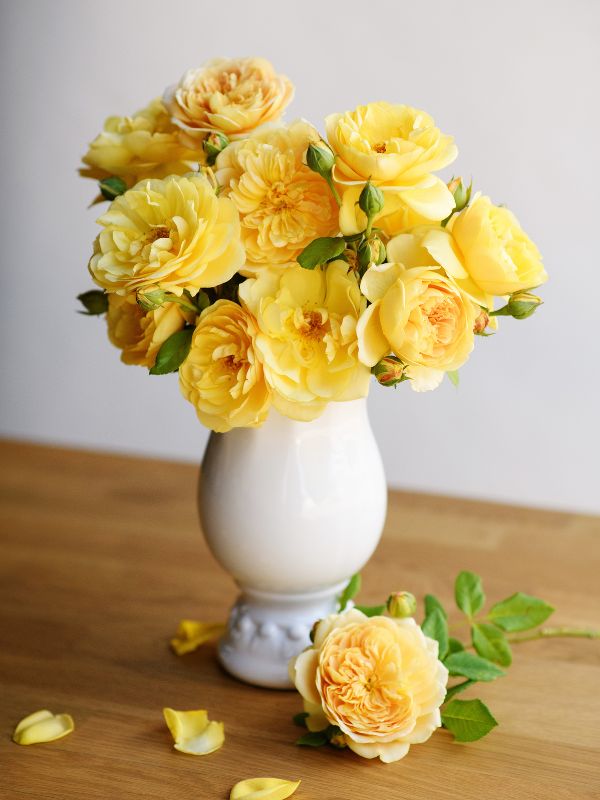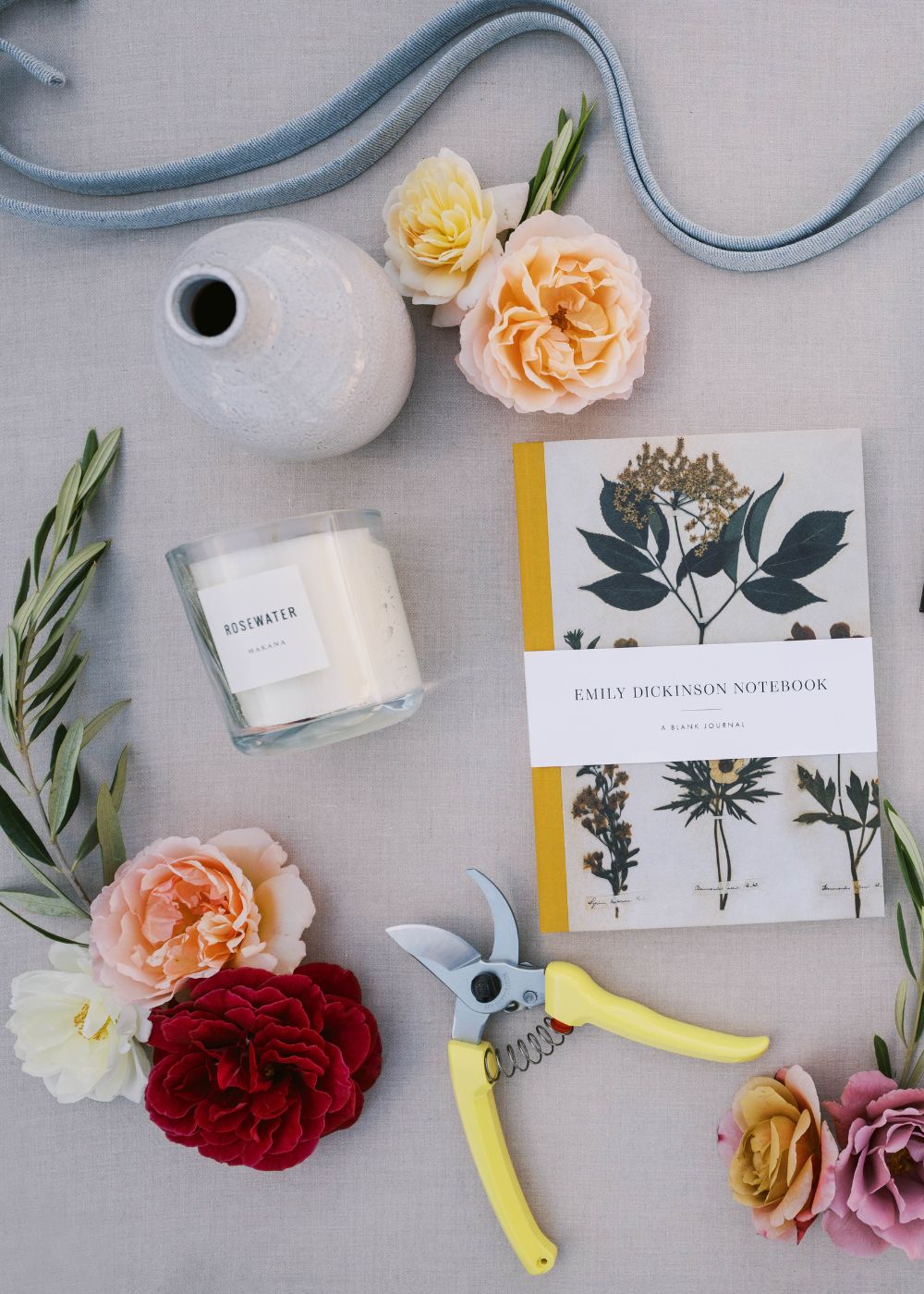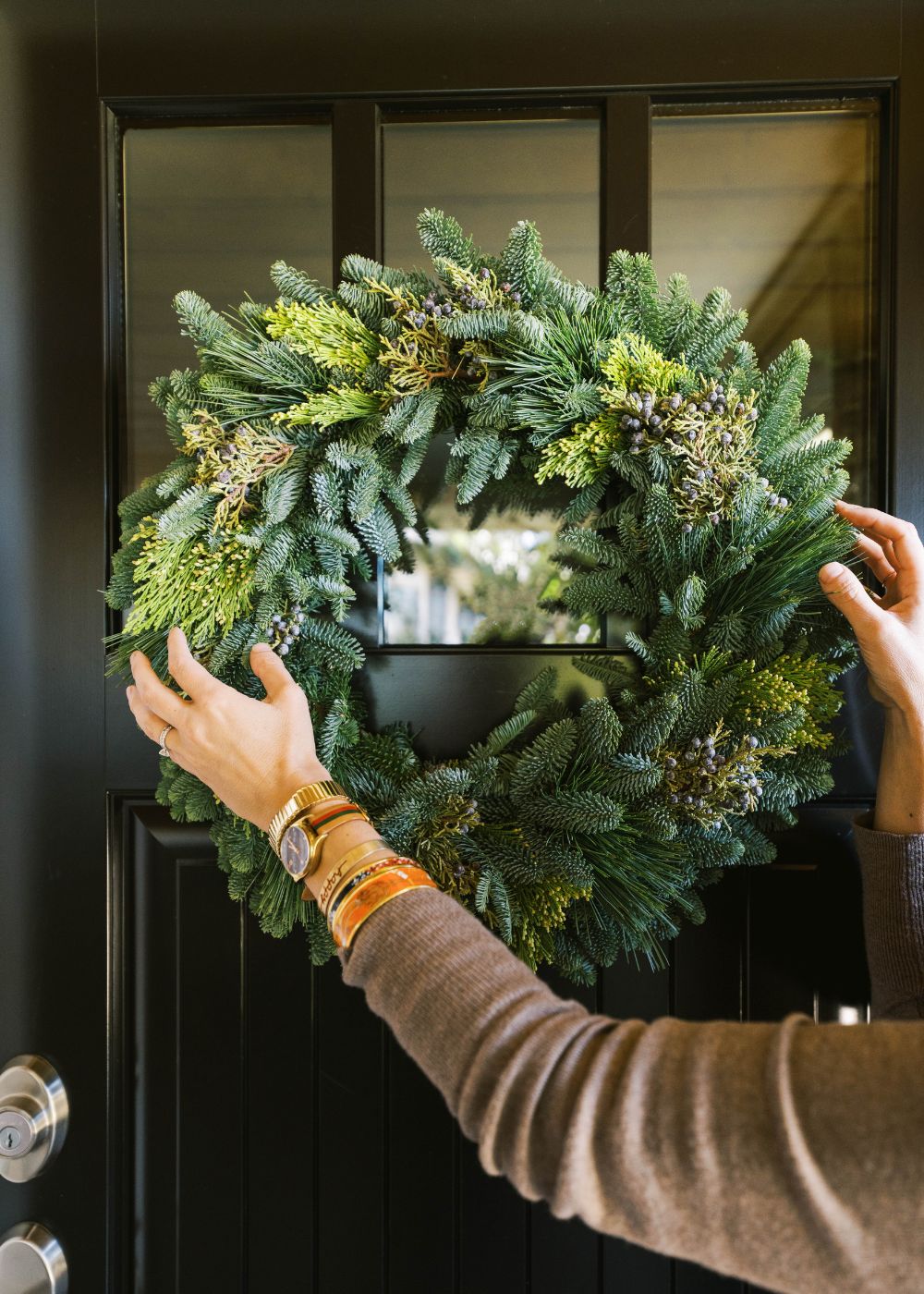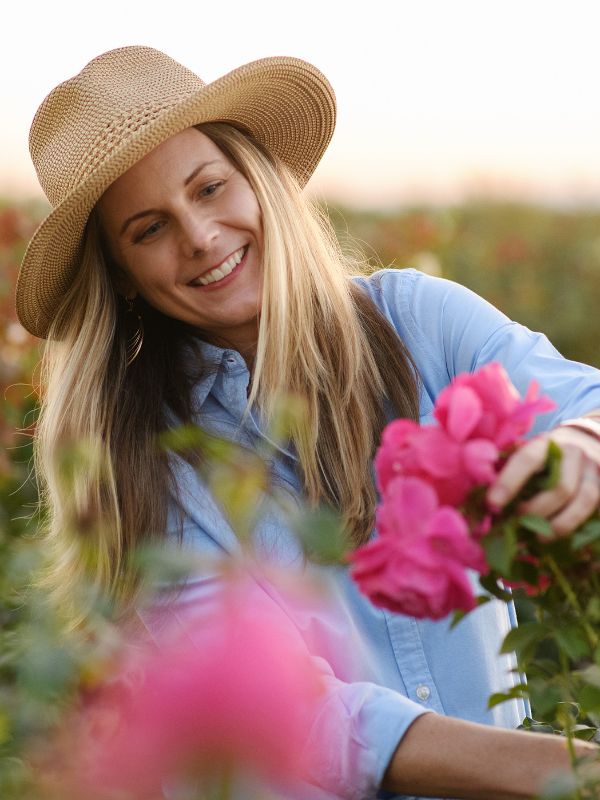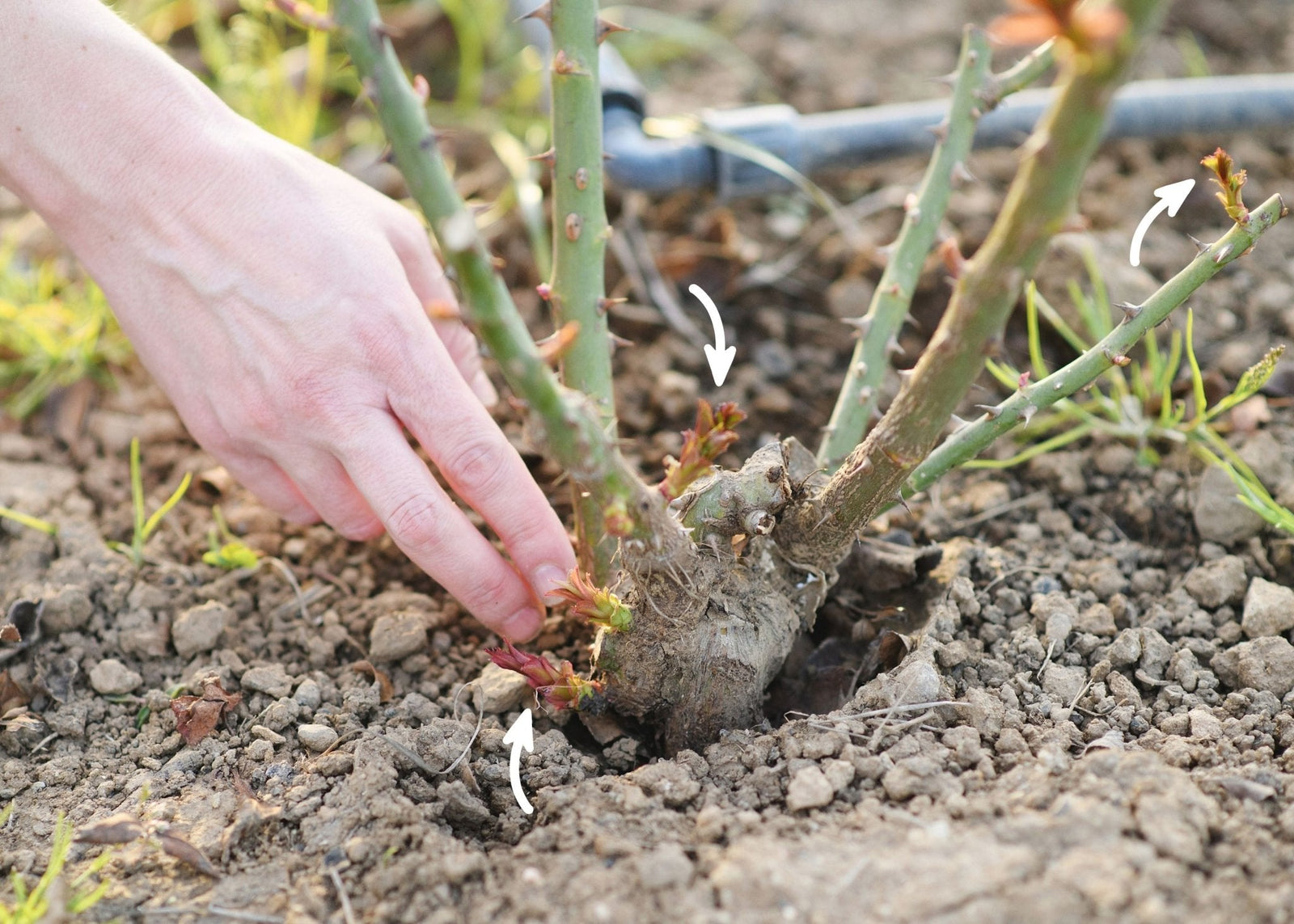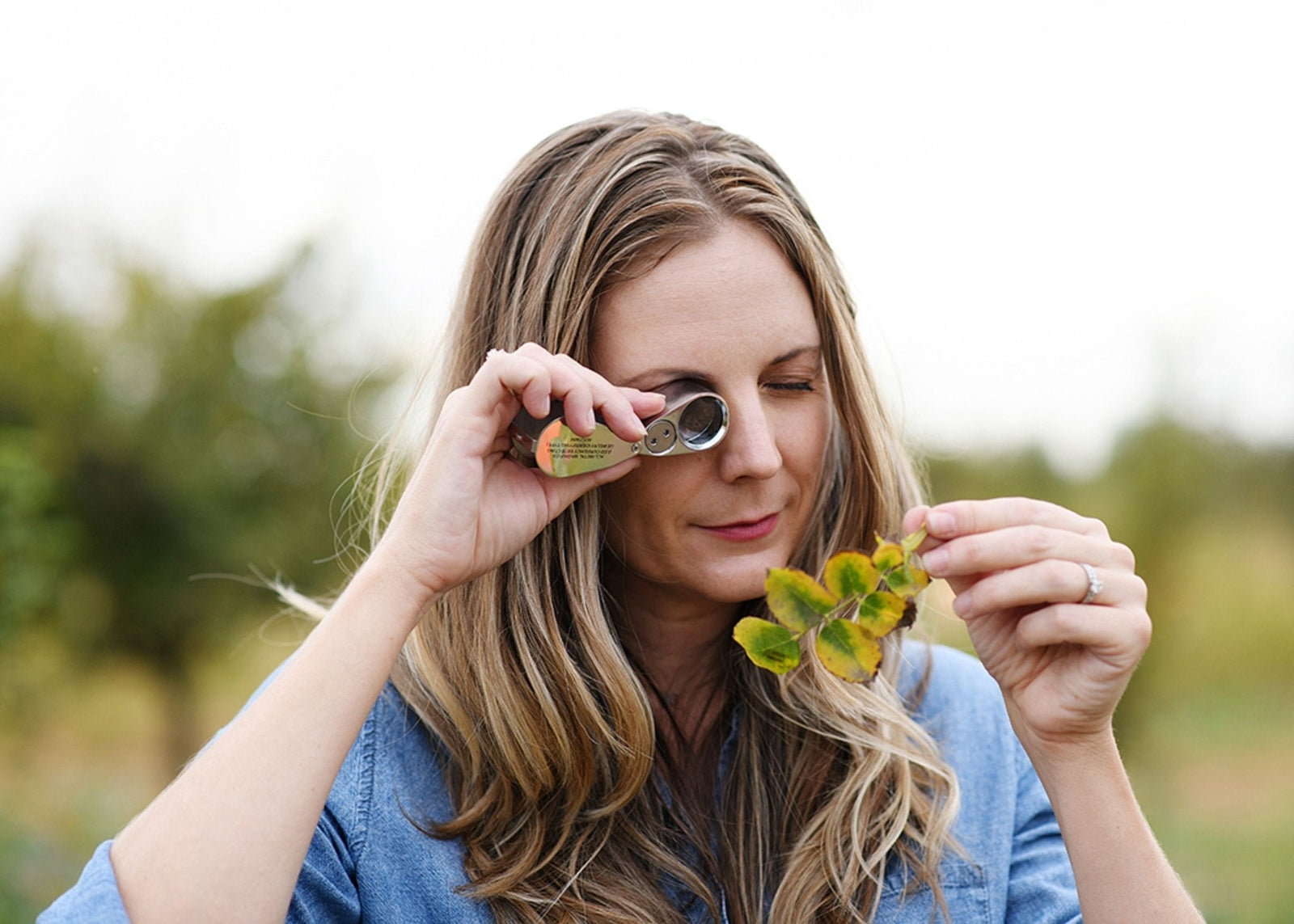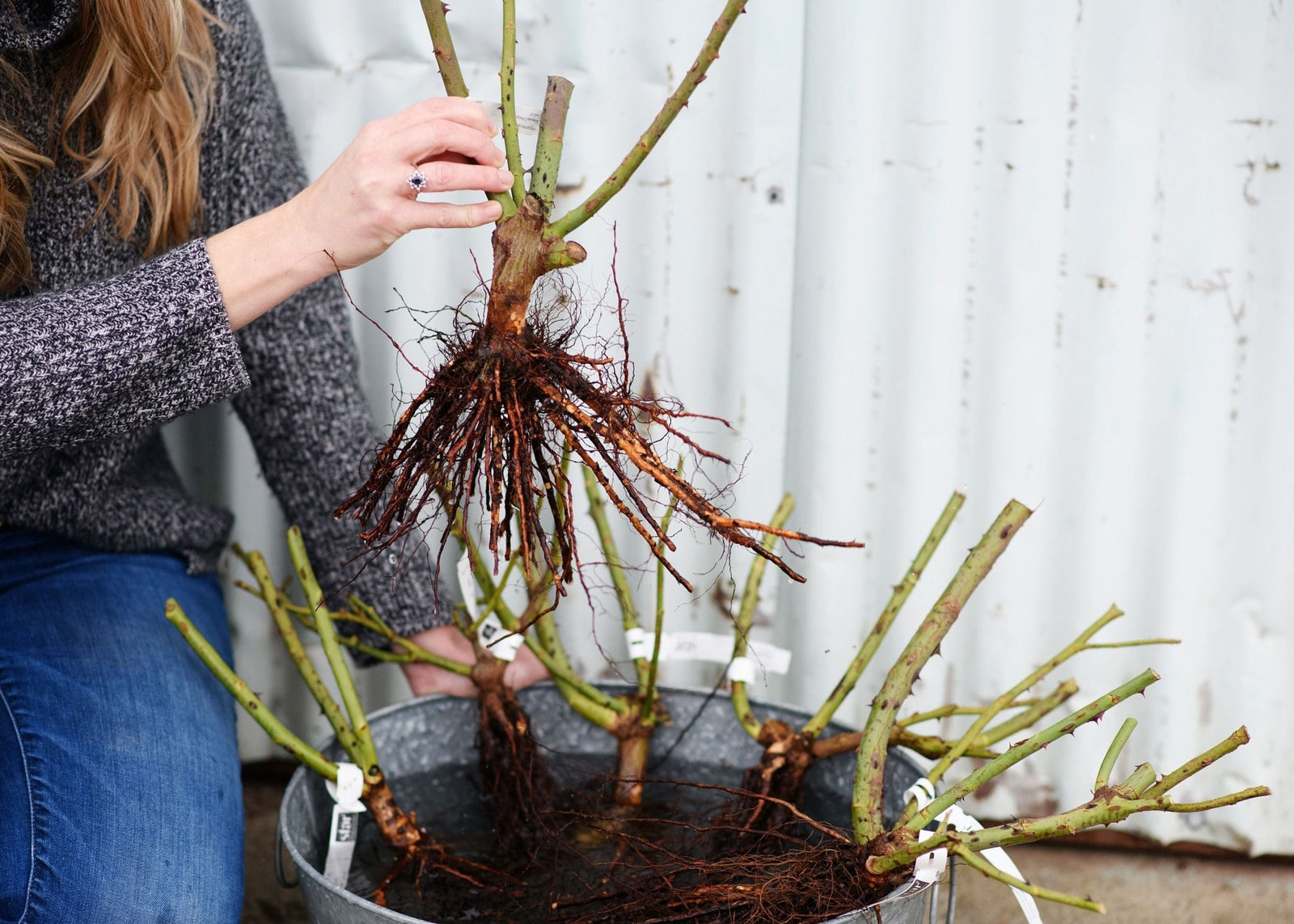At some point during the bare root rose planting & growing process, you may find yourself wondering, “Is this normal?” We’re here to help! We’ve compiled a list of the most commonly asked questions we receive from customers during the bare root rose season to help you determine whether your rose is healthy and progressing normally, or if there is something of concern that needs addressing.
MY BARE ROOT ROSE IS SMALL. DID I RECEIVE THE CORRECT GRADE?
If one of your bare root roses looks smaller than others in your order, there’s a good chance it’s an own root rose. Own root roses are traditionally smaller plants than grafted roses, and are graded using standards from a different grading category than grafted. They are graded as deciduous shrubs and may have canes that are smaller in diameter than their grafted rose cousins of the same grade. Learn more about sizing and grading HERE on our blog, How to Choose A Bare Root Rose Grade.

MY BARE ROOT ROSE IS DIRTY OR MOLDY
Bare roots are harvested straight from the rose field, so it’s perfectly normal to find some soil or debris remaining on your plant. During the shipping process, the moist environment can sometimes cause a bit of common mold growth, especially if your rose is shipped at the end of our season experiencing warmer spring temperatures, a delay in transit or you have stored your roses in their bag for after arrival prior to planting. Not to worry! Simply rinse the mold off with water or spray the plant with a solution of equal parts bleach and water and plant as normal. A small bit of mold growth will not cause any permanent damage to your plant.

MY BARE ROOT ROSE HAS WHITE AND/OR RED SHOOTS
Your bare root rose may arrive with white or red shoots on its canes or it may develop them if you have have stored them after receipt of your order. This is simply new growth, aka your rose budding out, and a sign that your rose is ready to grow! Leave them be, don't trim them off, and get your rose planted as soon as possible.

MY BARE ROOT ROSE HASN'T LEAFED OUT YET
To ensure success in growing your bare root rose, we ask that you follow our recommended storage, planting & care instructions included in each order and detailed in this
blog post. By following these instructions carefully, we expect bare roots to leaf out within 30 days.
However, a number of factors can inhibit their growth, including lack of water or sunlight, soil type, or changes in temperature.
If you’re experiencing slow or no growth, we recommend reviewing our instructions first to help you decipher what may have gone wrong. Common planting and care mistakes include storing improperly or for too long after arrival, planting outside of the recommended window for your growing zone (too early or too late), planting in a shady location, irregular watering, or adding fertilizer too soon.
1. If you haven’t yet, we highly recommend
testing your soil. A soil test will tell you exactly what your garden needs for a successful bare root rose growing season. Soil with herbicide residue or other deficiencies can have a negative effect on the growth of your bare root rose. My favorite soil test is by SoilKit and can be purchased right
here on our website or
here on Amazon. Simply register your sample online, collect your soil, and mail it off in the pre-paid and pre-addressed envelope. Within 2 days, you’ll get your test results plus personalized recommendations for fertilizer and soil amendments!
2. Water overhead daily until buds begin to push. Key word: overhead! This ensures that the canes are kept nice and moist.
3. Remove colored bark from the base of your rose. The majority of unsuccessful bare root roses we see from customers are piled high with colored bark. Not only can this prevent much-needed moisture from getting into the soil to reach your young roots, even worse, it may be treated with chemicals that can harm your rose. We recommend covering the base of your canes with a layer of compost or compost + loose wood mulch (not bark) instead.
4. Protect your rose from hard freezes. Weather can be wacky! Even if you planted your rose during the suggested time window, there’s always a chance Mother Nature will bring unseasonable temperatures. While roses are quite resilient to cold & frost, they need protection during sustained periods of time that are a hard freeze below 28º Fahrenheit. Learn more
HERE from the National Weather Service about the difference between a frost, freeze and hard freeze. Cover your bare roots with a frost cloth, a five gallon bucket or a larger rubbermaid container/tub for protection.
5. Practice patience. Easier said than done, we know! Sometimes bare root roses just need a bit of extra time to wake up from their winter’s nap and get cozy in their new home!

ONE OF MY BARE ROOT ROSES IS PROGRESSING DIFFERENTLY THAN OTHERS IN MY GARDEN
It’s important to remember that bare root roses are living things just like you and me, and each one is different! It is completely normal for roses to progress at a different pace, even under the exact same growing conditions. Some varieties will leaf out more quickly and some are a little slower to the party. Continue caring for your rose as normal, be patient, and you’ll likely see new growth soon!

THE ENDS OF MY BARE ROOT ROSE CANES ARE TURNING BLACK OR BROWN
Blackening or browning canes is a sign of dieback, and will continue to travel down toward the cane if not trimmed. Roses use their energy to continuously produce new stems and blooms, and may kill off a portion of the plant that isn’t benefitting the entire plant. Think of it as selective amputation so the rest of the plant can thrive. While minor dieback is a normal occurrence as your bare root gets established, it can also be a sign of stress. Common causes of dieback include lack of water, frost damage, soil quality or poor planting techniques.
We recommend trimming black ends down to healthy green canes immediately. This will prevent the dieback from spreading. As always, we recommend testing your soil (find my favorite soil test kit
here!), planting at the appropriate time for your growing zone, and carefully following our instructions included with each order and detailed in this
blog post & video series.
'Francis Meilland" rose pictured in both photos. The one on the left is more peach which can happen in cooler weather. The one on the right is more cream in tone during the warmer weather months.
MY BLOOMS LOOK DIFFERENT FROM THE PHOTOS ON YOUR WEBSITE
Keep in mind that bare root roses are young plants, typically about a year and a half to two and a half years old. It’s totally normal for bare root roses to have smaller blooms and shorter stems in their first year while they’re getting established in their new home. They're really just babies at planting. The first year in the ground they are toddlers and after one growing year they are teenagers heading into adulthood.
It’s also important to note that roses vary seasonally with changes in weather. High temperatures can lead to smaller blooms, lower petal counts, and variations in color. Cooler temperatures bring roses with higher petal counts and shades that can be more peach to pink in tone. This is especially true of white/cream varieties that will turn pink/peach in cooler weather.
Not the color you were expecting? Remember that colors may appear different in person than on your computer screen. Also, certain varieties look different in tight bud form and change colors as they bloom. Of course, if you ordered a lavender variety that produced yellow blooms, please
contact us! We do our very best to make sure that our roses are true to name and grade. That being said, since the roses are harvested dormant, a mislabel occasionally occurs in the field or during processing.

MY ROSE LOOKS DEAD
Hey, it happens! Whether you’re brand new to growing bare roots or a seasoned vet, sometimes bare root roses just don’t perform as we hoped they would. They are living things and some just don't make it even when we do all the things right. Albeit disappointing, there’s always next year! Try not to get discouraged, take good notes and make a plan for next season. To help you figure out what may have gone wrong, check out our blog on Common Bare Root Planting & Care Mistakes.
You can trim down the canes until you see green growth in the center. If there is still green in the middle then the rose isn't dead and just needs time and some TLC to rejuvenate.
While you anxiously await your first blooms, we know it can be overwhelming to wonder whether you’re doing all the right things for your new rose baby. We hope these tips give you confidence in determining whether your bare root rose is healthy and thriving or needs some extra love and care.
Photos By: Jill Carmel Photography
This post may contain affiliate links. I make a small commission if you purchase a product from the link. I only recommend products I love and use in hopes they will help you too!








